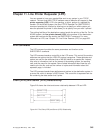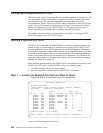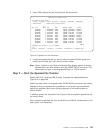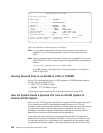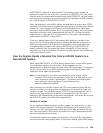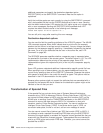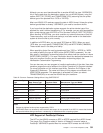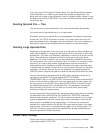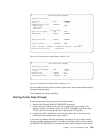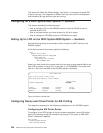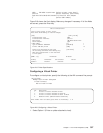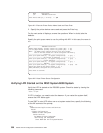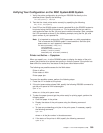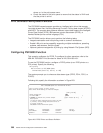
If you are using LPR through the Remote Writer, then the Remote Writer changes
its job attributes to run under the user profile that created the spooled file. The
writer does not change its job attributes to those of a system profile. Instead, it uses
the default user profile of QSPLJOB. In any case, the Remote Writer always passes
the authority test.
Sending Spooled File — Tips
You can send only printer spooled files. You cannot send diskette spooled files.
You cannot send a spooled file that is in an open status.
Successful sending of a spooled file only acknowledges a successful transmission.
At that point, the TCP/IP connection is closed. If any errors occur while the LPD
server processes the file, messages cannot be sent back. You must not delete any
files without verifying that the spooled file was created or printed successfully.
Sending Large Spooled Files
Depending on system load, how your printer is configured, and other variables, you
might need to disable or increase the idle timeout value on the printer to print large
spooled files. This value is set differently, depending on what kind of printer you are
using. The procedure for changing the timeout and range of settings is device
dependent. For more information, see the documentation provided with the printer.
On some printers, this is set on the control panel. On others, it is set using a Telnet
command. You need a large timeout value because the printer connection is
opened before the file transforms to ASCII. Otherwise, the system resources used
in transforming are wasted if the printer is in use by another job when the transform
completes. You cannot send the file until the transform is complete because the
LPR/LPD protocol requires the system to send the total byte count before any data.
You can also transform the spooled file to ASCII before sending to the printer by
sending it to the AS/400 LPD server. Specify DESTTYP(*AS400)
TRANSFORM(*YES) on the SNDTCPSPLF command along with the desired ASCII
printer model and options. Specify the local host name for the remote system and
an output queue on the AS/400. Use a second SNDTCPSPLF command to send
the transformed spooled file to the desired printer. This significantly reduces the
wait time seen by the printer. You can also use this with printer pass-through
(below) by creating two output queues.
You can accomplish this more efficiently with printer pass-through (below) by adding
the destination option XAUTOQ with the CHGOUTQ or CRTOUTQ commands.
Note the option must be capitalized. The file is transformed and sent to the remote
system as specified by the other remote output queue parameters unless the idle
timeout value is exceeded during transformation. In this case, the transformed
spooled file is routed instead to the AS/400 LPD server and sent back to the same
output queue. From there it is automatically sent again to the remote system. The
Host Print Transform recognizes that the spooled file is already transformed and
sends the spooled file without that delay.
Printer Pass-Through
Printer pass-through enables you to route printer files automatically to another
system that supports TCP/IP LPD.
Chapter 11. Line Printer Requester (LPR) 353



